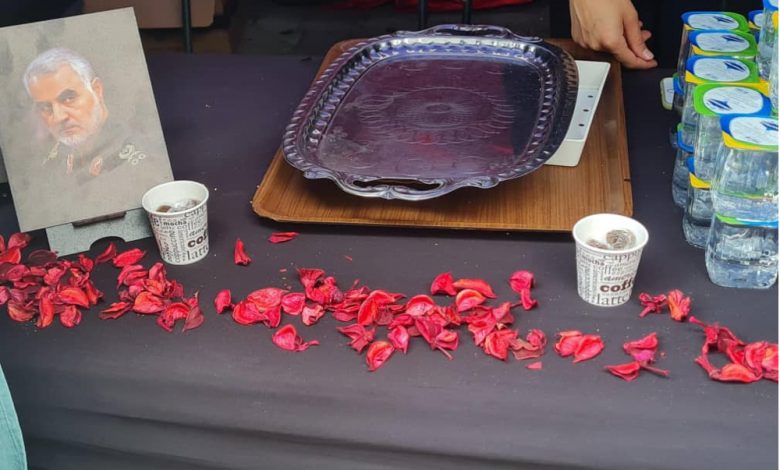‘Lebbeyk ya Hüseyin’: Observing Ashura in Istanbul
When one thinks of the former imperial capital of the Ottoman Empire, Istanbul, one can’t help but conjure up images of the iconic Sultan Ahmet Mosque, also known as the Blue Mosque, or the magnificent Byzantine-era Hagia Sophia, which was reverted into a mosque in 2020 after undergoing a couple of conversions since its original inception as a church.

By Omar Ahmed
The Ayasofya Camii, as it is referred to in Turkish, with its multi-domed structure served as an inspiration for the construction of the Sultan Ahmet and subsequent Ottoman-period and contemporary Turkish mosques which were modeled on its once-unique design.
In the very same city, indeed on the same European side, exists another mosque which is unique in its own right – the Zeynebiye.
It may come as a surprise to many that this massive complex caters to the country’s Shia minority in a largely Azeri neighborhood situated in the Küçükçekmece municipality. While still undergoing construction inside, the exterior is complete.
Unlike most of the distinctive Ottoman-styled domes, minarets, and color scheme which is seen throughout the city and the rest of the country, the Zeynebiye stands out remarkably.
This is because of its large, shiny golden dome and twin minarets assuming a rather Persian architectural design. The mosque is clearly a nod to the holy shrines which are particularly important to Shia Muslims in Iraq, Iran, and parts of the Levant.
Once completed, the Zeynebiye will be Europe’s largest Shia mosque and cultural center.
Although Sunni-majority Turkey’s largest religious minority is the Alevi – said to be a off-shoot of the Twelver Shia sect – there exists a significant population of the latter known locally as the Caferi sect in reference to the sixth Shia Imam Ja’faar Al-Sadiq who had a profound impact on the development of the Twelver school of jurisprudence.
No official data exists, but the Caferi (Jaferi) community is estimated to be between one and three million and are mainly concentrated in Eastern Turkey and Istanbul with many originating from present-day Azerbaijan having fled the 1878 Ottoman-Russian war and the Bolshevik Revolution of the 1920s.
Present-day Istanbul has the highest concentration of the Caferi community. During the Ottoman period, the Caferi of Istanbul were mostly Iranian citizens but today most originate from Eastern Anatolia with many having migrated and settled in Istanbul throughout the 1960s and 1990s.
Incidentally, it was from the 1990s onwards that the public mourning processions commemorating the martyrdom of Imam Hussein (AS) witnessed a revival, as previously during Ottoman times it was observed only by Iranian Shias until the beginning of the twentieth century.
This year’s Muharram was my second visit to the Zeynebniye area, which is home to a humble, original Islamic center of the same name. It was also my first time observing Ashura overseas, which was especially interesting as it was in a secular, Sunni-majority country.
There are actually scores of Shia mosques dotting the vast city of Istanbul and I have thus far visited a handful but was fortunate to experience a couple of the Muharram majalis in the build-up to the fateful, tragic tenth day of Muharram.
While there was a very obvious language barrier, the universal message of Imam Hussein’s (AS) resistance to tyranny and standing up for justice, in addition to the emotional epic of Karbala, seemed to transcend those barriers.
This was particularly possible by seeing the familiar banners and flags dedicated to the members of the Ahlulbayt, be it Lady “Zeynep”, Hazrat Abbas, or “Imam Hussein”, in addition to the somber atmosphere with everyone dressed in customary black clothing and of course the mourning rituals and chants of “Labbayk ya Hussein”.
Yet it was the culmination of Ashura day itself that was most memorable, which fell on Monday, August 8, this year here in Turkey. As with most events organized by the active Shia community around the world, Ashura in Istanbul was a very organized affair, with most centers and mosques coordinating in one large gathering which took place at the Yahya Kemal Beyatli Performing Arts Center, in the vicinity of the Zeynebiye mosque.
The 10,000 indoor capacity venue was filled to the brim, but there were many more of the community outside, so much so that the main road leading to the area was cordoned off, with a large police presence to maintain the security which was appreciated, given how in other Muslim-majority countries, such gatherings are viciously targeted by Takfiri extremists.

Following recitals, there was also a passionate play performed on stage and like the speeches, it was broadcast for those outside on large screens.
In line with contemporary attitudes to mourning rituals, there were also tents taking blood donations, which has been recommended by some scholars instead of blood-letting rituals.
Heading back to the street leading to Zeynebiye, it felt like being in Iraq or Iran and not Turkey due to the Ashura atmosphere on full display, with a sea of people wearing black and the sounds of latimyas blaring from loudspeakers.
In the hospitable spirit of the Arba’eeen pilgrimage, local restaurants and other volunteers set up stands offering free beverages and food. It was a pleasant surprise to see one of the Muharram stalls displaying a picture of the late Iranian anti-terror commander Lt. Gen. Qassem Soleimani.
We often hear about the universality of Imam Hussein’s (AS) revolution and message of justice. However, when experiencing it in another country, a Sunni-majority country, in a completely different setting to what one is used to, that is when the expression of “Labbayk ya Hussein”, or in this case “Lebbeyk ya Hüseyin” can truly be appreciated.
Omar Ahmed has an MSc International Security and Global Governance from Birkbeck, University of London. He has travelled throughout the Middle East, including studying Arabic in Egypt as part of his undergraduate degree. His interests include the politics, history and religion of the MENA region.
Partly Taken from Presstv







